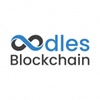Layer 2 (L2) scaling solutions aim to address scalability issues in blockchain networks. Based on the current blockchain (layer 1), these proposals add a way to boost the network’s capacity. They enhance the user experience by processing more transactions more quickly and efficiently, benefiting blockchain app development. zkSync (zero-knowledge Sync) is one such L2 solution. In this article, we explore how it achieves faster transactions and lower fees, and its benefits, and compare it with other scaling solutions.
Understanding zkSync
ZKSync is an Ethereum layer-two blockchain implemented as a zk-rollup. Like optimistic rollups, zk-rollups collect transactions off the Ethereum mainnet and send Ethereum transaction proofs.
It involves a process of bundling hundreds of transactions into a single batch. Ethereum authenticates and safeguards this process.
Explore More | Zero-Knowledge Proof for Blockchain Transaction Privacy
How zkSync is Different from Other L2 Solutions
Other L2 scaling solutions include optimism and Polygon.
The primary distinction between zkSync and Optimism lies in their underlying technology. zkSync uses ZK rollup technology along with zero-knowledge proofs for robust security. ZK rollups involve the set of transactions going through an Ethereum network accuracy verification process.
Upon successful verification, the batch of transactions attains finality, similar to any typical Ethereum transaction. Cryptographic validity proofs, often called zero-knowledge proofs, make this possible.
For each set of off-chain transactions, the ZK rollup operator creates proof of validity. Once this proof is generated, it is then submitted to the Ethereum network, effectively concluding the roll-up batch. In zkSync, this submission process is facilitated through a SNARK or succinct non-interactive argument of knowledge.
Polygon and zkSync differ in their scaling approaches. Polygon offers a flexible scaling framework with options like sidechains, Supernets, and zkEVM that allow developers to tailor solutions to their needs. In contrast, zkSync prioritizes secure and efficient scaling using Zk rollup technology. The choice between the two depends on a project’s specific needs and preferences.
Also, Check | Comprehending ZK Rollups | Layer 2 Scaling Solutions
Benefits of zkSync
Here are the benefits of zero-knowledge Sync:
Transaction Fees and Speed
zkSync offers user-friendly token payment fees that allow users to pay fees in cryptocurrencies other than Ethereum. For example, when transferring stablecoins like Tether, you can choose to pay the fee in Tether.
The transaction fees are reduced to a penniesample using the L2 technology. In order to do this, ZK tech stacks like the Redshift proof system, LLVM-based Solidity compiler, and GPU prover are used.
zkSync’s design allows for unlimited computation in each block. It enables new types of dApps (decentralized applications) that can process significantly more data on-chain than was previously possible.
Additionally, it provides shorter transaction times, designed to accelerate the withdrawal process. Users can expect their withdrawn currency to reach their accounts between 10 minutes to 7 hours.
Throughput
zkSync has introduced the concept of hyperchains. These are a group of independent ZK chains that operate on the Ethereum network and are connected by fully trustless Hyperbridges. Users can create their Hyperchains with custom consensus and security is inherited from the underlying layer 1.
Nodes limit the throughput of individual Hyperchains. But, together Hyperchains can achieve unlimited total throughput for the entire zkSync ecosystem.
How can you utilize zkSync to Build Projects?
Here is how you can utilize the L2 scaling solution to develop new projects:
Smart Contract Development
You can create and deploy smart contracts optimized for zkSync. It ensures compatibility with the zero-knowledge rollup technology.
To ensure seamless operation and compatibility, existing Solidity contracts can also be transferred from Ethereum to zero-knowledge Sync.
DApp Development
dApps such as DeFi protocols, NFT marketplaces, gaming platforms, and DAO structures can be developed that take advantage of zkSync's features. dApps and zkSync wallets can be integrated.
Conclusion
In this era of rapid technological advancement, zkSync tackles the scalability problem and paves for the future of decentralized finance and applications. If you are interested in leveraging its full potential, then Oodles Blockchain can assist you. Hire blockchain developers to get started.


No comments yet